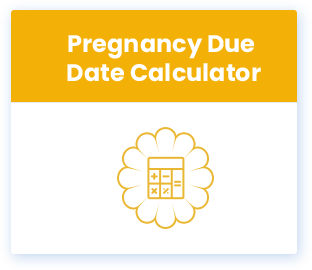Maintaining menstrual hygiene revolves around ensuring cleanliness and health during menstruation. Its significance lies in infection prevention and maintaining comfort. Prioritizing menstrual hygiene ensures timely removal of blood, reducing the risk of bacterial growth and subsequent infections. Additionally, it fosters a sense of confidence and freshness throughout the menstrual cycle. Therefore, adhering to effective menstrual hygiene practices is crucial for overall health and well-being.
Need for Menstrual Hygiene
Ensuring proper menstrual hygiene is crucial for numerous reasons, spanning health, comfort, and social well-being. Primarily, it serves as a preventive measure against infections resulting from prolonged exposure to menstrual blood. Without adequate hygiene practices, bacteria can thrive, leading to various infections such as urinary tract infections and reproductive tract infections.
Additionally, maintaining good menstrual hygiene enhances overall comfort and confidence during menstruation. Regular changing of menstrual products and thorough cleansing help minimize discomfort associated with wetness and odor, fostering a sense of well-being and self-assurance. Feeling clean and fresh during menstruation is vital for individuals to engage confidently in their daily activities without hindrance or embarrassment.
Moreover, menstrual hygiene is essential for promoting social inclusion and empowerment, particularly in low-resource settings. Access to clean menstrual products, sanitation facilities, and education on hygiene practices is fundamental for enabling individuals, especially women and girls, to manage their periods with dignity. Insufficient access to menstrual hygiene resources can lead to absenteeism from school or work, hindering educational and economic opportunities.
In essence, prioritizing menstrual hygiene is vital for safeguarding health, enhancing comfort and confidence, and promoting social inclusivity and empowerment. By advocating for menstrual hygiene, individuals can contribute to creating a more inclusive and supportive environment for menstruating individuals worldwide.
7 Ways to Take Care of Menstrual Hygiene During Menstrual Cycle
Wash Immediately:
Washing immediately after changing menstrual products is crucial for maintaining menstrual hygiene. This practice ensures thorough removal of menstrual blood, reducing the risk of bacterial growth and infections. Use clean water and gentle cleansers to cleanse the genital area for freshness. Prompt washing also minimizes discomfort and odor, promoting confidence and well-being. Prioritizing this habit supports menstrual health and overall hygiene, fostering a sense of confidence and comfort during menstruation.
Wipe From Front to Back Always:
Maintaining proper menstrual hygiene during the menstrual cycle involves always wiping from front to back. This technique is crucial as it prevents the transfer of bacteria from the anal region to the vaginal area, thus reducing the risk of infections like urinary tract infections (UTIs) and bacterial vaginosis. Following this practice minimizes the introduction of harmful bacteria, ensuring overall vaginal health and hygiene. It’s recommended to use gentle, unscented toilet paper and soft wiping motions to prevent irritation and maintain comfort during menstruation, promoting a clean and hygienic experience.
Pick The Right Product:
Choosing the right menstrual product is pivotal for menstrual hygiene. It’s crucial to opt for a product that suits your flow and lifestyle, such as pads, tampons, menstrual cups, or period panties. Selecting items with adequate absorbency levels ensures effective leakage protection, preventing stains and discomfort. Additionally, considering factors like material, size, and comfort helps minimize the risk of irritation and allergic reactions. Prioritizing eco-friendly options also contributes to environmental conservation. By making informed choices, individuals can feel confident, comfortable, and secure during their periods, promoting overall menstrual health and well-being.
Wear Comfortable Clothes:
Ensuring comfort in clothing choices is pivotal for maintaining menstrual hygiene. Opt for loose, breathable fabrics like cotton to facilitate airflow, preventing moisture buildup and bacterial growth. Avoid tight garments to minimize friction and discomfort. Darker-colored attire conceals potential leaks or stains, reducing stress. Choose underwear with a cotton crotch for enhanced moisture absorption and breathability. By prioritizing comfort, individuals can effectively manage their menstrual cycle, supporting overall menstrual health and well-being.
Avoid Using Chemical Loaded Soaps:
Choosing chemical-free soaps is vital for menstrual hygiene. Traditional soaps often contain harsh chemicals that disrupt the genital area’s natural pH balance, causing discomfort and irritation. Opt for gentle, hypoallergenic cleansers designed for sensitive skin or intimate hygiene. These products are free from harsh substances, fragrances, and dyes that can trigger irritation or allergies. By using mild, chemical-free soaps, individuals can cleanse the genital area effectively without disturbing the skin’s delicate balance, ensuring optimal menstrual hygiene and overall comfort during menstruation.
Frequently Change Menstrual Hygiene Products:
Ensuring menstrual hygiene during the cycle involves regularly changing hygiene products like pads, tampons, or menstrual cups every 4-6 hours. This practice helps prevent bacterial growth, reducing infection risks and discomfort. Extended usage can lead to odor and irritation. Moreover, frequent changes minimize leaks and stains, promoting a sense of freshness and confidence. Adhering to this routine enables individuals to manage menstrual flow effectively, mitigating health risks and ensuring comfort and cleanliness during menstruation.
Stay Dry:
To ensure menstrual hygiene, prioritize staying dry during your cycle. Choose breathable cotton underwear to absorb moisture and encourage airflow, reducing the risk of irritation and bacterial growth. Avoid tight clothing that traps moisture and heat, creating a breeding ground for bacteria. Promptly change out of damp clothing to prevent discomfort and odor. Using panty liners for added protection against leaks and stains can also help. By emphasizing dryness, individuals can minimize the risk of infections and discomfort, ensuring proper menstrual hygiene throughout their cycle.
Conclusion
Ensuring menstrual hygiene is crucial for overall well-being. By maintaining cleanliness, and dryness, and using suitable products while avoiding irritants, one can prevent infections and discomfort during menstruation. Prioritizing hygiene fosters comfort and confidence, contributing to a healthier menstrual experience. Read more blogs for pregnancy at Buding Star.
More Blogs To Read
7 Pregnancy Tips To Consider For An Expecting Mom
Tips To Make Your Pregnancy Easier And Even More Beautiful
5 most useful things to be done during pregnancy!!
- Baby Monitors with Noise Monitoring: How They Work and Why They Matter - October 2, 2025
- Attachment Parenting Guide: Principles, Practices, and What to Expect - September 9, 2025
- Understanding Your Baby’s Cry: A Parent’s Mini Guide - June 23, 2025
- Bottle vs. Breastfeeding: What Works for You and Your Baby - June 18, 2025
- 10 Yoga Poses For Kids at Home: Benefits Of Yoga For Kids - June 12, 2025
- Parenting Guide to Child Development: Key Milestones from Birth to 10 Years - June 4, 2025
- Summer Vacation Plans Ideas with Kids - May 27, 2025
- Nutritious Dried Fruit Treats for Toddlers (16–24 Months) - May 25, 2025
- Importance of Screen Time Management for Kids - May 24, 2025
- The 6 Most Common Pregnancy Concerns First-Time Moms Have - May 23, 2025
















